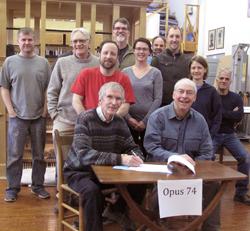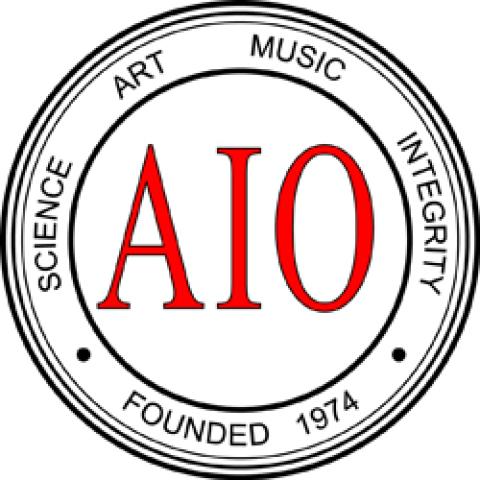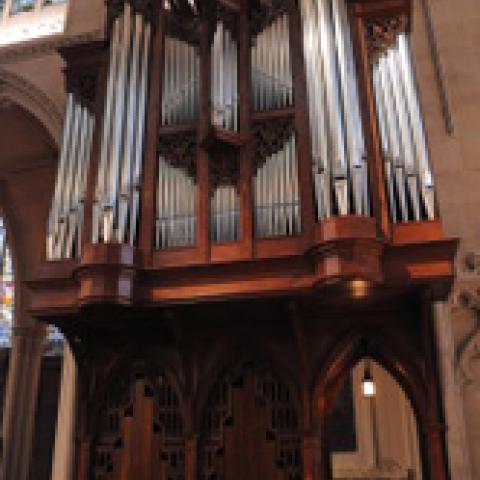
Taylor & Boody Organbuilders, Staunton, Virginia, has received a commission to build a three-manual, 41-stop organ for the new St. Paul’s University Catholic Center in Madison, Wisconsin. Groundbreaking for the new complex, a $26 million project, occurred in February 2016 with an anticipated completion date of August 2017.
Installation of the organ is expected in June 2018. Priest in charge of the project is Reverend Eric Nielsen, and the organ consultant is John Chappell Stowe of the University of Wisconsin–Madison School of Music. The organ will be the firm’s Opus 74. For information: http://www.taylorandboody.com
Photo: signing the contract for Taylor & Boody Opus 74





